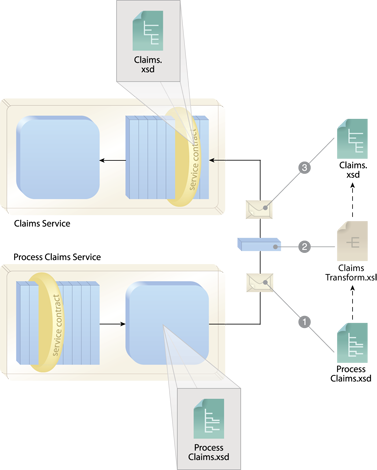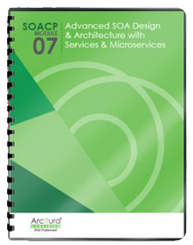SOA Patterns > Transformation Patterns > Data Model Transformation
Data Model Transformation (Erl)
How can services interact with programs that communicate with different data formats?

Problem
Services may use incompatible schemas to represent the same data, hindering service interaction and composition.
Solution
A data transformation technology can be incorporated to convert data between disparate schema structures.
Application
Mapping logic needs to be developed and deployed so that data compliant to one data model can be dynamically converted to comply to a different data model.
Impacts
Data model transformation introduces development effort, design complexity, and runtime performance overhead, and overuse of this pattern can seriously inhibit service recomposition potential.
Architecture
Inventory, Composition

An XSLT style sheet containing data model mapping logic (2) is added as a form of intermediary processing that is executed at runtime. With each transmission, the data model of the claims document is converted from the schema used by the Process Claims service (1) to the data model compliant with the schema used by the Claims service (3). This runtime transformation logic can reside with either service architecture or as part of a separate middleware platform.
Related Patterns in This Catalog
Canonical Resources, Canonical Schema, Capability Recomposition, Data Format Transformation, Domain Inventory, Inventory Endpoint, Legacy Wrapper, Multi-Channel Endpoint, Protocol Bridging, Rules Centralization, Service Agent
Related Patterns in Other Catalogs
Related Service-Oriented Computing Goals
This pattern is covered in SOACP Module 7: Advanced SOA Design & Architecture with Services & Microservices.
For more information regarding the SOA Certified Pofessional (SOACP) curriculum,
visit www.arcitura.com/soa.
This page contains excerpts from:
SOA Design Patterns by Thomas Erl
(ISBN: 0136135161, Hardcover, Full-Color, 400+ Illustrations, 865 pages)
For more information about this book, visit www.arcitura.com/books.

